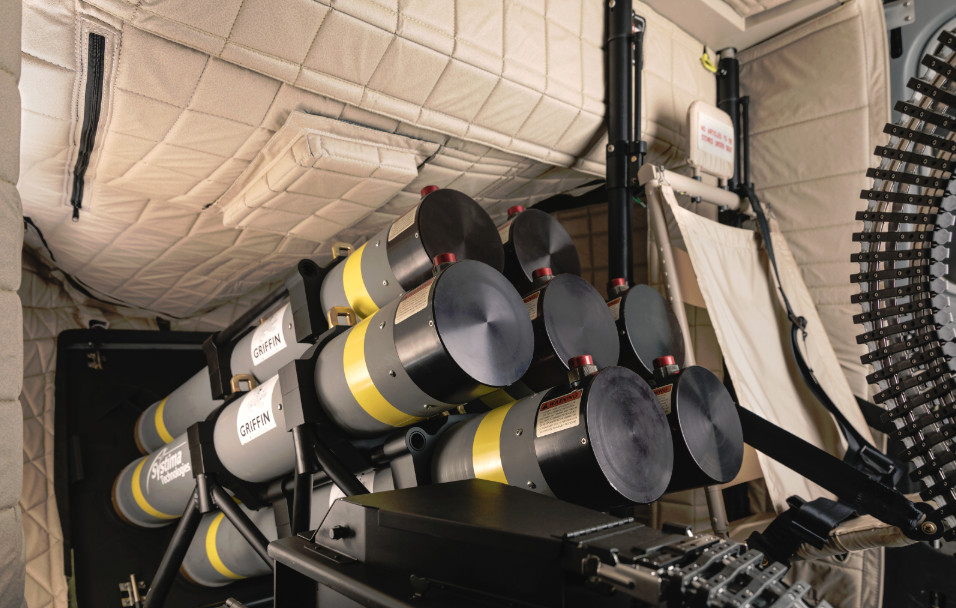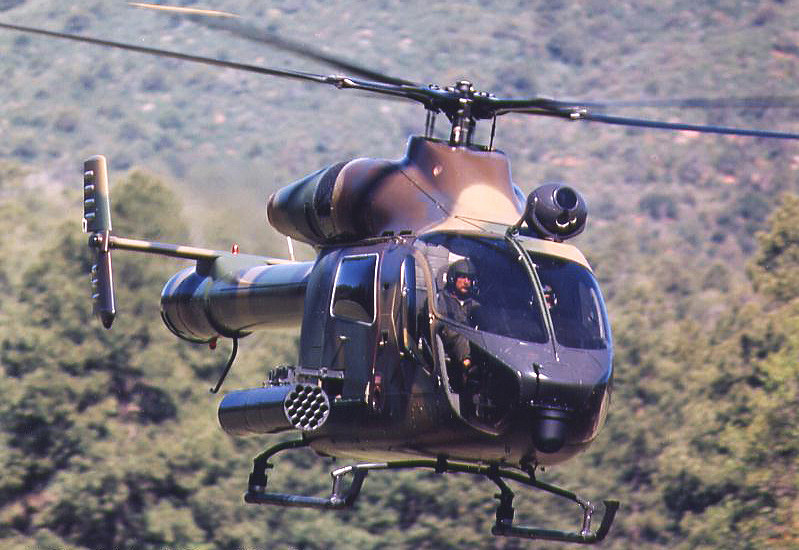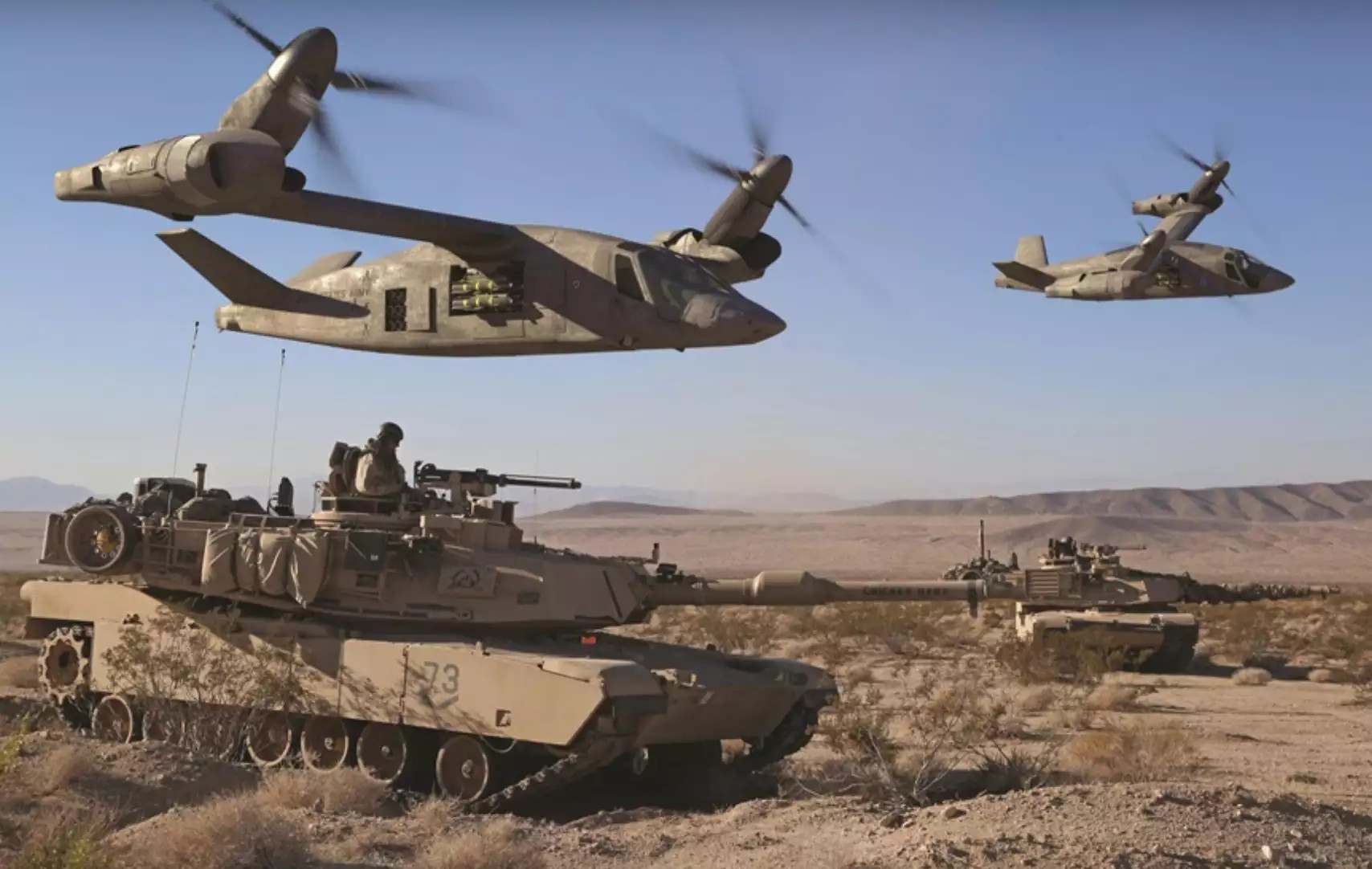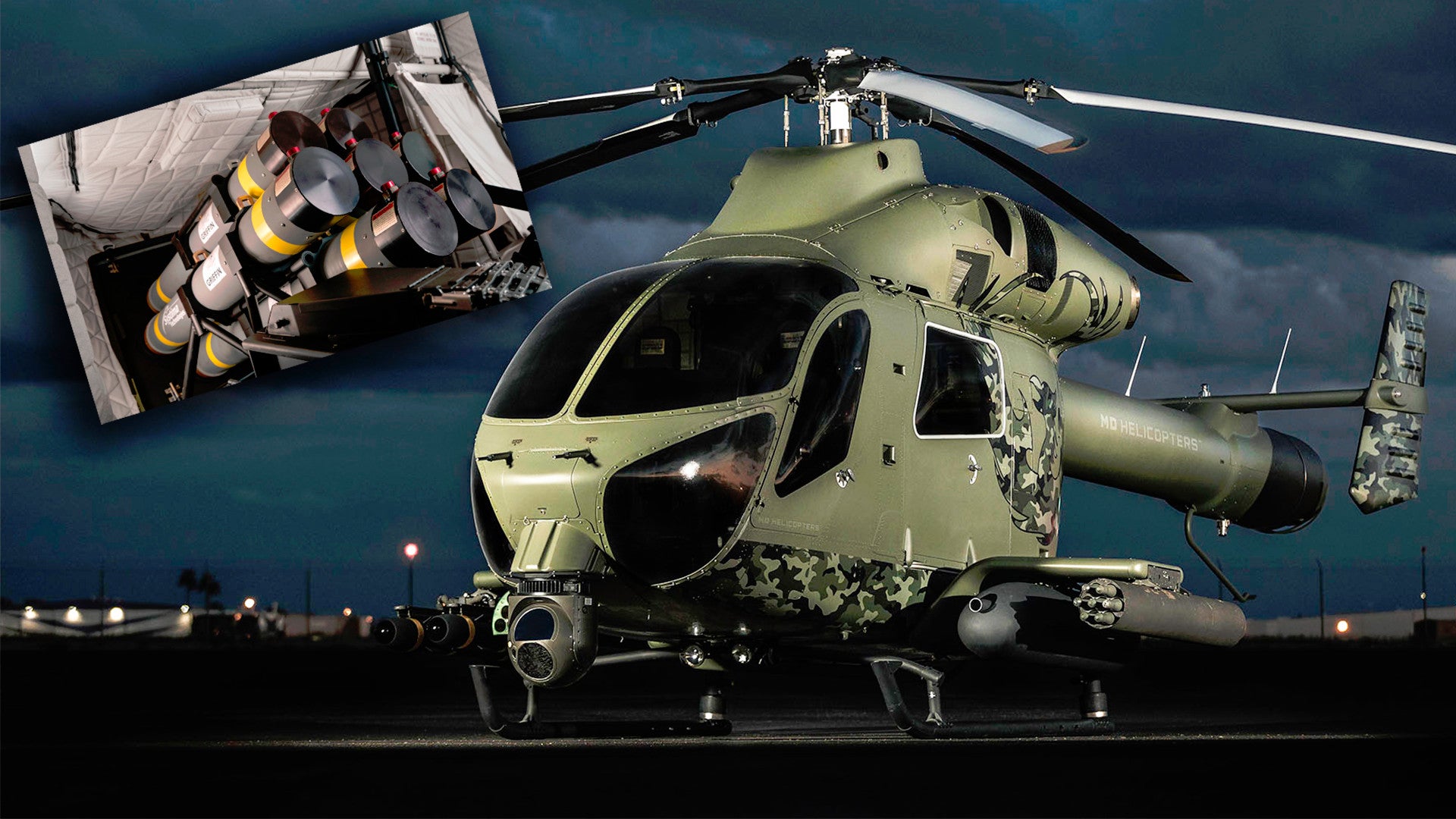Just a little over a month after MD Helicopters unveiled its latest armed helicopter, the MD 969, the company has revealed a new option for the chopper, a seven-round launcher that sits inside the main cabin and pops precision-guided munitions out through a hatch in the rear of the fuselage. The system uses the increasingly popular Common Launch Tube, or CLT, which can already accommodate a wide variety of payloads, including small drones.
The Arizona-headquartered helicopter maker debuted the weapon system, which it says CLT-maker Sistema Technologies custom designed for the MD 969, at the Army Aviation Association of America’s 2019 Army Aviation Mission Solutions Summit on Apr. 14, 2019. The company had only shown the MD 969 to the public for the first time at the HAI Heli-Expo on Mar. 5, 2019.
“Powerful, agile and elegant, the MD 969 is first and foremost an advanced twin-engine light attack helicopter that delivers impressive endurance, speed, maneuverability, and unmatched safety,” Lynn Tilton, MD Helicopter’s CEO, said in a press release. “With the integration of this innovative and adaptable Common Launch Tube System – a capability not currently offered on any light attack helicopter – the MD 969 will be a true force multiplier; creating the performance and capability benchmark for future twin-engine light attack helicopter advancements.”

The MD 969 is the latest variant in the company’s MD 900-series, also known Explorer series, which what was then McDonnell Douglas Helicopter Systems first introduced in the early 1990s. The twin-engine Explorers are larger and more powerful than the company’s better-known MD 500-series helicopters, more commonly known as Little Birds.

It is worth noting that MD Helicopters already offers Little Birds with Dillon Aero’s six-position Mission Configurable Aircraft System (MCAS), which can also accommodate CLTs, but the CLT launcher for the MD 969 offers this capability without sacrificing space for other stores on its stub wings. Having the system mounted in the helicopter’s main cabin potentially means it could be reloadable in the flight, too. Of course, extra loaded tubes would also limit the space available inside for other systems.
The configuration MD Helicopters put on display at the Army Aviation Mission Solutions Summit had tubes marked as if they were loaded with seven of Raytheon’s AGM-176 Griffins. These weapons can function as powered missiles or unpowered glide bombs and feature a multi-mode guidance system that can either home in on a laser spot or use its GPS-assisted Inertial Navigation System to hit a specific set of coordinates. This gives it the ability to engage moving vehicles or strike fixed targets, even in poor weather.

Griffin is just one option, though. Elements of the U.S. military, including U.S. Air Force Special Operations Command (AFSOC) and the U.S. Marine Corps, also employ CLTs loaded with the GBU-44/B Viper Strike glide bomb for multiple different launch platforms. AFSOC has also begun using CLT-launched GBU-69/B Small Glide Munitions (SGM), something that recently made international news as part of an Amnesty International investigation into civilian casualties that American air strikes may have caused in Somalia in recent years.
But Sistema has been offering these tubes as a common launch mechanism for various payloads from both rotary and fixed-wing aircraft, including drones, for nearly a decade. The company has qualified other munitions in the CLT, including Textron’s G-CLAW miniature multi-mode glide-bomb. It has also demonstrated that the tube can serve as a way for aircraft to deploy small drones, such as Raytheon’s Coyote, in mid-air.

MD Helicopters’ specifically noted this latter capability in announcing the new CLT weapon system. The MD 969 will be able to deploy unmanned aircraft “provide increased situational awareness for both ground and air-based warfighters” and that this “will be a game-changer for light attack helicopter operations,” according to the company’s press release.
The new precision-guided munitions launcher is only one part of the MD 969’s arsenal, too. MD Helicopters had initially shown the design with stub wings, each with up to three hard points. These can accommodate a wide variety of weapons, including gun pods, unguided and guided 70mm rockets, and guided missiles, such as the AGM-114 Hellfire. The chopper has a sensor turret under the nose with a mix of electro-optical and infrared cameras, as well as a laser designator.
Otherwise, the MD 969 leverages much of the design from the established Explorer series. Though MD Helicopters had pitched a militarized Combat Explorer variant in the past, the MD 900-series has enjoyed sales primarily with police, air ambulance services, and companies offering VIP transport services.

The U.S. Coast Guard did briefly operate a pair of the helicopters, designated the MH-90, with door-mounted weapons. The Mexican Navy does fly Explorers with forward-firing machine guns and rockets.
As with all the other variants of the Explorer, the MD 969 uses MD Helicopter’s No Tail Rotor (NOTAR) system, which leverages vectored thrust from the main engines rather than a tail rotor to counter the torque of the main rotor. The proprietary NOTAR arrangement allows for quieter operation, eliminates the danger of the tail rotor hitting something during low-level flight, and reduces the overall size of the helicopter’s tail, which can be valuable for operating in constrained spaces.

The light attack helicopter also features a number of general improvements over the earlier 900-series models. This includes a modular, open-architecture glass cockpit that is customizable to meet customer demands and can readily accept upgrades and improvements in the future.
MD Helicopters had also been working on a high-speed derivative, called the Swift, to meet the demands of the U.S. Army’s Future Attack Reconnaissance Aircraft (FARA) program. However, the service rejected that proposal. You can read about the Army’s program, which is looking for a high-speed, long-range rotorcraft, in greater depth here.
Still, the MD 969 offers impressive capabilities for a helicopter of its size. The CLT weapon system now leaves the door wide open for the rapid integration of new munitions and payloads in the future, as well. Of course, while Sistema made this specific weapon system custom for MD Helicopters, it would not be surprising to see CLT launchers as an option on an increasing number of helicopters, as well as fixed-wing aircraft, as time goes on for the same reason.
Bell has already shown concept art of its V-280 Valor tilt-rotor equipped with nine-round side-mounted munitions launcher that also appears to use the CLT. A similar weapon system would be a relatively simple way to increase the capability of other modular and adapted gunship platforms, too.

Right now, though, the weapon system definitely helps MD Helicopter’s latest light attack chopper stand out from its competitors.
Contact the author: jtrevithickpr@gmail.com
